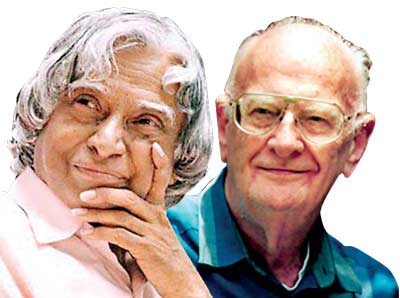Reply To:
Name - Reply Comment
Last Updated : 2024-04-27 00:40:00

.jpg)
.jpg)
 s Guided Missiles at the Defence Research and Development Organization, as the Chief Executive of Integrated Guided Missile Development Programme (IGMDP), under which the development and operationalisation of AGNI and PRITHVI Missiles took place. His strategic contribution was in providing leadership for building indigenous capability in critical technologies through networking of multiple institutions.
s Guided Missiles at the Defence Research and Development Organization, as the Chief Executive of Integrated Guided Missile Development Programme (IGMDP), under which the development and operationalisation of AGNI and PRITHVI Missiles took place. His strategic contribution was in providing leadership for building indigenous capability in critical technologies through networking of multiple institutions.
Add comment
Comments will be edited (grammar, spelling and slang) and authorized at the discretion of Daily Mirror online. The website also has the right not to publish selected comments.
Reply To:
Name - Reply Comment
US authorities are currently reviewing the manifest of every cargo aboard MV
On March 26, a couple arriving from Thailand was arrested with 88 live animal
According to villagers from Naula-Moragolla out of 105 families 80 can afford
Is the situation in Sri Lanka so grim that locals harbour hope that they coul